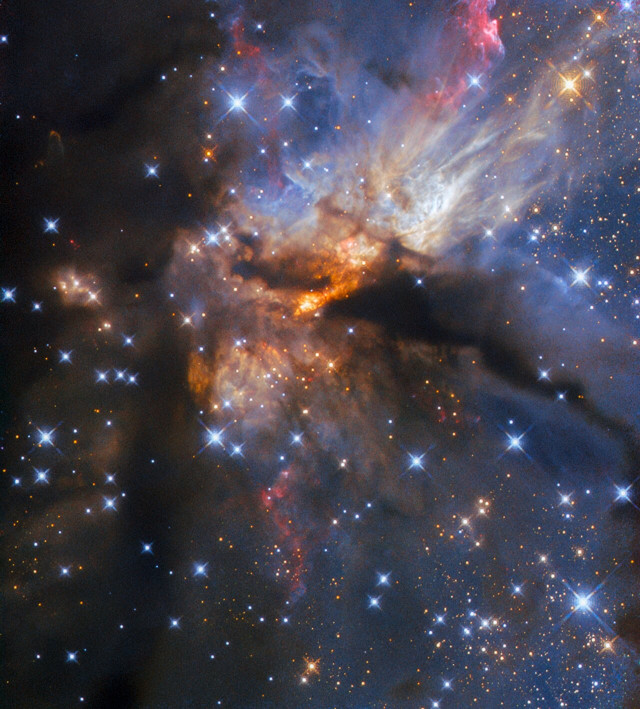
An image captured by the Hubble Space Telescope depicts the star-forming region cataloged as G35.2-0.7N, in which massive stars form. Protostars are surrounded by cocoons of gas and dust which in turn are inside larger clouds, and that usually makes them invisible. However, one of those protostars near the center of the image is emitting jets of materials that illuminate the region and dig into the gas, allowing some of the protostellar light to escape.
About 7,200 light-years away from Earth, the G35.2-0.7N region is of interest to astronomers who are studying the processes that lead to the birth of stars. The Hubble Space Telescope’s Wide Field Camera 3 (WFC3) instrument is one of many that have been used over time in various studies taking photos that have now been assembled into a single image.
Among the detections carried out in the G35.2-0.7N region was that of the ionization of the jets of materials emitted by the protostar near the center of G35.2-0.7N. Measuring ionization helps understand the energy levels of those emissions. Protostellar jets are collimated, meaning they are emitted in parallel beams that don’t spread much as they recede into space but tend to advance in a more or less straight line.
The jets emitted by the protostar and directed more or less towards the Earth are digging into the cocoon that still surrounds that star which is still in its formation process, revealing its light. Despite this, much of it is still blocked by dust and what is detected by the Hubble Space Telescope is orange.
The action of nearby stars and protostars within the G35.2-0.7N region leads to chaotic activity that makes the shapes detected by astronomical instruments irregular. What we see is only part of the activity taking place and each instrument detects a different part of it. Some infrared filters were used for the WFC3 instrument to take the photos of G35.2-0.7N used to create this image.
Infrared frequencies are among the few that pass through the cloud of gas and dust, which is why the Hubble Space Telescope was used to observe the G35.2-0.7N region. Now the James Webb Space Telescope could observe it to gather more details. The result will be more breathtaking images that will be useful to astronomers to study star formation processes, also to understand the differences between the birth of massive stars and small-medium stars.

